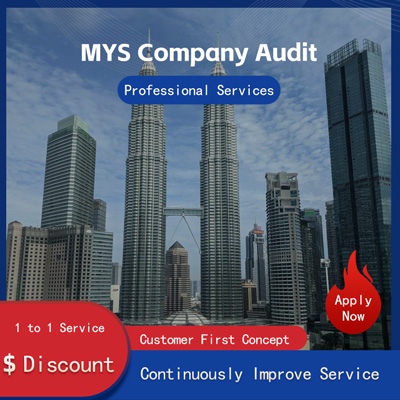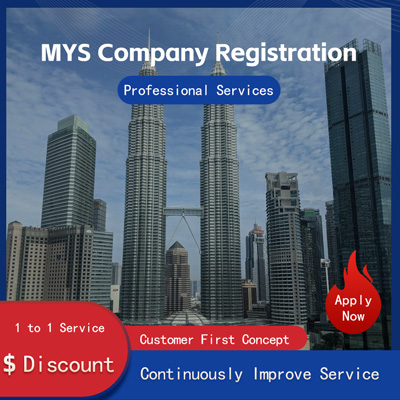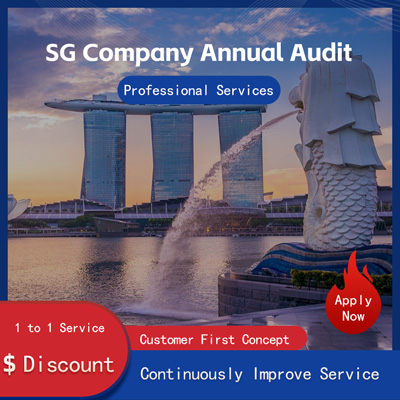
Tax Issues in VIE Structures How Much Do You Know?
How Much Do You Know About the Tax Issues Involved in the VIE Agreement?
In recent years, with the accelerated pace of Chinese enterprises going global and foreign enterprises entering the domestic market, cross-border investment and cooperation have become increasingly frequent. In this process, the Variable Interest Entity VIE structure, as an important business arrangement, has gradually become a choice for many companies. However, the tax issues hidden behind this structure are often overlooked. This article will combine recent relevant news to explore the main tax issues involved in the VIE agreement and provide reference for related enterprises.

What is the VIE Agreement?
Simply put, the VIE agreement is a business model that involves setting up an offshore company, usually located in places like the Cayman Islands or Bermuda, and controlling the domestic operational entity through contractual arrangements. This approach is common in the internet industry, especially for companies subject to foreign investment access restrictions. For example, well-known companies such as Alibaba and Baidu have previously adopted the VIE structure. The advantage of this model lies in its ability to bypass foreign ownership caps in certain industries while maintaining actual control over domestic operations.
Core Tax Issues
Despite the flexibility provided by the VIE structure, its tax compliance faces numerous challenges. First, since the profits under the VIE structure do not directly originate from within China but are transferred to offshore entities through complex contractual arrangements, this may lead to double taxation or other tax issues. Second, profit transfer behaviors that may exist under the VIE structure could attract attention from tax authorities, thereby increasing the company's tax risks.
News Background Tax Disputes Over the VIE Structure
Recently, news about a well-known technology company being investigated by tax authorities after listing overseas due to its VIE structure has attracted widespread attention. It was reported that the design of the company's VIE structure was considered to have an unreasonable profit distribution mechanism, leading to a large amount of profit flowing to low-tax countries, thus reducing its taxable amount in China. This incident not only sparked public doubt about the company's tax transparency but also prompted regulatory bodies to pay more attention to the tax compliance of the VIE structure.
Another piece of news pointed out that some companies failed to fully consider changes in international tax rules when adopting the VIE structure. With the strengthening of anti-tax avoidance actions globally, measures such as the Base Erosion and Profit Shifting BEPS Action Plan are being implemented step by step. These changes require companies to reassess their tax strategies to ensure compliance with the latest regulations.
Specific Tax Issues Faced
1. Reasonableness of Profit Distribution
In the VIE structure, profits are typically transferred from domestic entities to offshore entities in the form of service fees and royalty payments. However, if these fees lack reasonable justification, they may be viewed as improper profit shifting. For instance, excessively high service fees might be deemed as artificially inflating costs to reduce the taxable income of the domestic entity.
2. Risk of Double Taxation
When enterprises within the VIE structure operate both in China and other countries, they may face the risk of double taxation. On one hand, domestic entities need to pay corporate income tax; on the other hand, offshore entities may also be taxed on their global income. How to effectively avoid double taxation is an important issue that companies must address.
3. Compliance of Transfer Pricing
Transfer pricing is one of the most common tax issues in the VIE structure. Companies need to ensure that their internal transaction prices meet market standards; otherwise, they may be adjusted by tax authorities. For example, if a management fee charged by an offshore company to a domestic company is significantly higher than the market price, it may be deemed unreasonable.
4. Impact of Capital Weakness
Capital weakness refers to a company's behavior of relying too much on debt financing rather than equity financing to reduce tax burdens. This phenomenon is particularly prominent in the VIE structure, as offshore parent companies often provide funding support to domestic entities through loans. If the loan ratio is too high, it may trigger relevant capital weakness regulations, thereby increasing the company's tax burden.
Strategies and Recommendations
To address the above issues, companies can take the following measures to optimize their tax management
1. Strengthen Internal Audits
Regularly review financial data under the VIE structure to ensure all transactions have reasonable commercial purposes and supporting documents. Especially in cases involving related-party transactions, greater attention should be paid to details to avoid unnecessary tax disputes.
2. Reasonable Planning of Profit Distribution
When designing the VIE structure, companies should fully consider differences in tax rates across regions and reasonably plan the profit distribution path. For example, subsidiaries can be set up in regions with lower tax rates to reduce overall tax burdens.
3. Closely Monitor Policy Dynamics
With the continuous evolution of international tax rules, companies should promptly follow changes in relevant policies and adjust their tax strategies accordingly. For example, companies should prepare in advance for new regulations to avoid penalties due to non-compliance.
4. Hire Professional Teams
Given the complex legal and tax issues involved in the VIE structure, it is recommended that companies hire professional accounting firms or law firms to provide comprehensive consulting services. This not only improves work efficiency but also effectively reduces potential risks.
Conclusion
Although the VIE agreement brings convenience to enterprises, it also carries certain tax risks. Only by thoroughly understanding its underlying tax logic and taking scientifically reasonable countermeasures can sustainable development truly be achieved. It is hoped that this article will provide valuable references for related enterprises and help them better address the tax challenges brought by the VIE structure. In the future, with further standardization of the global tax environment, it is believed that more enterprises will benefit from it.
Still have questions after reading? More than 98,000 users have contacted us. Please fill in the following information to obtain business information.

Previous Article
Unveiling the Full Process and Key Considerations for Querying Equity in U.S. Companies
May 30, 2025Next Article
Zero Tax Filing for Singapore Companies Practical Guide to Save Costs and Time
May 30, 2025Service Scope
MoreRecommended for You
- How to Choose HSBC Services to Boost Singapore Wealth Management?
- Tax Issues Under the VIE Structure How to Achieve Compliance and Optimization in a Globalized Context?
- Ultimate Guide to Registering a Bank Account in Singapore A Comprehensive Handbook Experience Sharing
- SCB Singapore Account Key Benefits Opportunities Not to Overlook
- What Are the Requirements for Opening a Company Bank Account in Singapore? A Comprehensive Guide to Banking Requirements in the Financial Hub
- NRA Account Bank Analysis New Path for Overseas Asset Management
- Opening a Bank Account in Singapore A Detailed Process and Key Considerations
- HSBC USD Account Setup Guide Unlocking Global Finance with Ease
- OSA, NRA, and FTN Accounts Deep Dive Unveiling the Financial World
- Bank of Singapore Shanghai Branch Convergence of Financial Innovation and Global Vision
- Singapore Offshore Company Taxation Unveiling Wealth Management Strategies for Successful Entrepreneurs
- Will Overseas Bank Cards Be Automatically Canceled If Not Used? Unveiling the Hidden Truth You Don't Know
- Full Guide to ODI Business Registration with Out-of-Province Banks A Practical Manual for International Operations
- What Do You Know About Chinese People's Bank Deposits In Vietnam?
- Global Sys Acct Reg Guide Unlocking the Door to International Wealth Management
- East West Bank Debit Card Application Guide Effortless International Account Management, Wealth Freedom at Your Fingertips!
- Personal Can Easily Open NRA Account, Operation Guide Here!
- Should You Close a Foreign Bank Account? A Guide to the Details and Options
- Which Country's Bank Card Is Easiest to Apply For? Overseas Bank Card Application Guide
- What's the Difference Between a USD Account and a Regular Account? Do You Know These Facts?


 ONE
ONE








Customer Reviews
Small *** Table
December 12, 2024The experience was very good. I was still struggling to compare it with other companies. I went to the site a few days ago and wanted to implement it as soon as possible. I didn't expect that everything exceeded my expectations. The company is very large, with several hundred square meters. The employees are also dedicated and responsible. There is also a wall of certificates. I placed an order on the spot. It turned out that I did not make a wrong choice. The company's service attitude is very good and professional. The person who contacted me explained various things in detail in advance. After placing the order, the follow-up was also very timely, and they took the initiative to report the progress to me. In short, I am very satisfied and recommend this company!
Lin *** e
December 18, 2024When I first consulted customer service, they recommended an agent to me. They were very professional and patient and provided excellent service. They answered my questions as they came in. This 2-to-1 service model is very thoughtful. I had a lot of questions that I didn’t understand, and it’s not easy to register a company in Hong Kong. Fortunately, I have you.
t *** 7
December 19, 2024I originally thought that they only did mainland business, but I didn’t expect that they had been doing Hong Kong business and were doing very well. After the on-site interview, I decided to ask them to arrange the registration of my Hong Kong company. They helped me complete it very quickly and provided all the necessary information. The efficiency was awesome. It turns out that professional things should be done by professionals.👍
b *** 5
December 16, 2024In order to register a company in Hong Kong, I compared many platforms and stores and finally chose this store. The merchant said that they have been operating offline for more than 10 years and are indeed an old team of corporate services. The efficiency is first-class, and the customer service is also very professional.